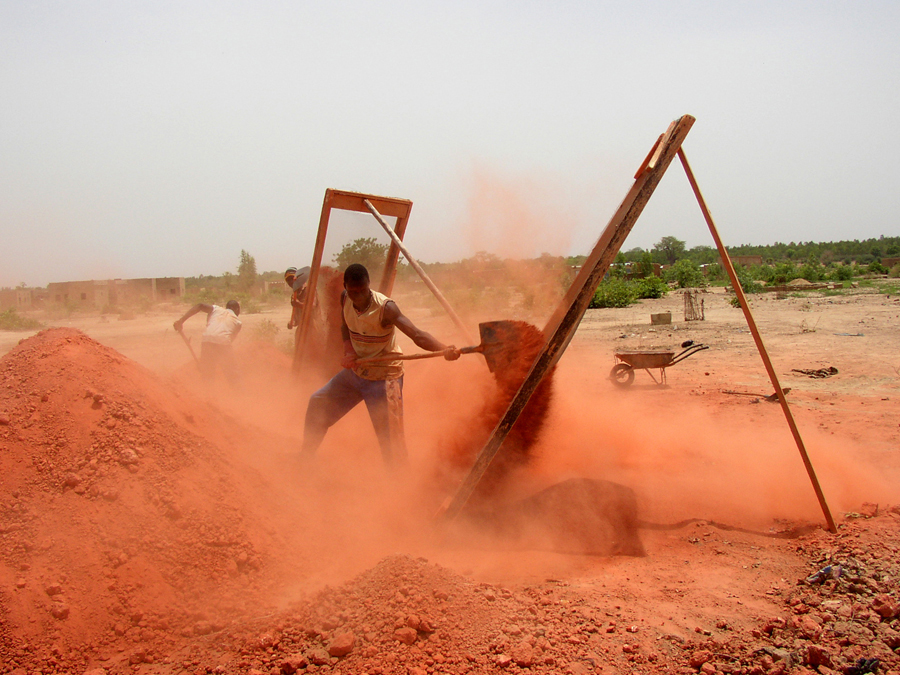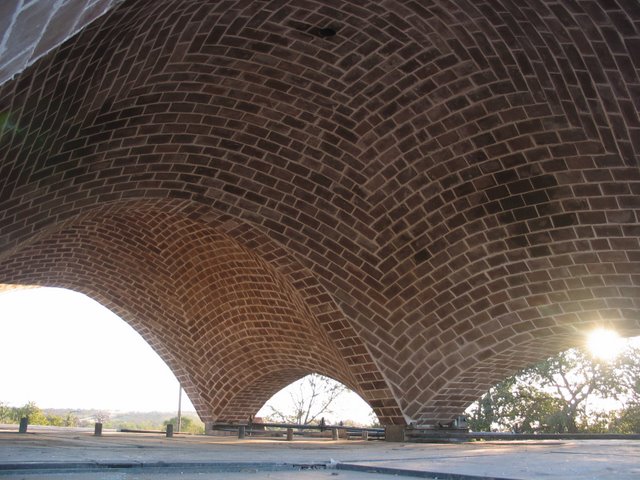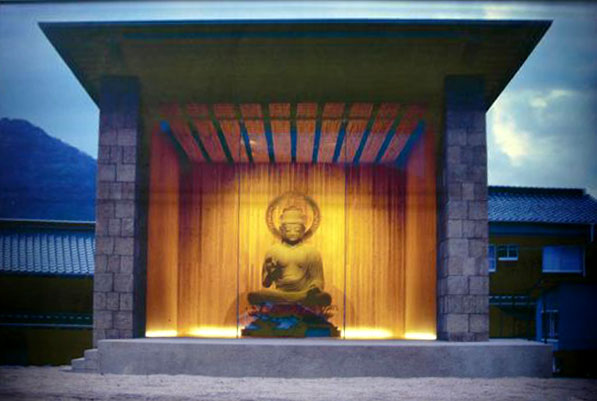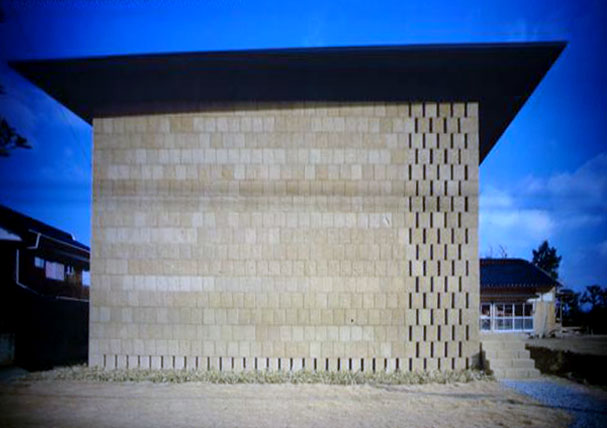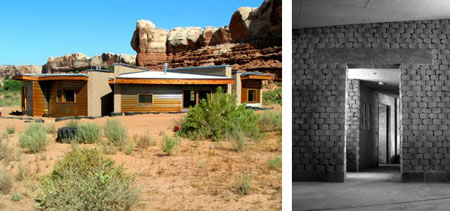The impact of Koudougou’s Central Market, designed by the Swiss Agency for Development and Cooperation (SDC) / Laurent Séchaud / Pierre Jequier for the Koudougou Municipality and completed in 2005, is twofold: at the urban scale, it reinforces and enhances the fabric of a mid-sized town, providing a monumental civic space for commercial and social exchange. On the level of construction, it introduces simple and easily assimilated improvements to a traditional material – stabilised earth – which allow it to achieve its full aesthetic and environmental potential. By using blocks of compressed earth, the market not only demonstrates the superior climactic performance of the local building material, but also shows how humble earth blocks can be used to create a sophisticated pattern language of vaults, domes and arches.
The market is the third of its type to be built under the direction of the Swiss Agency for Development and Cooperation (SDC) in cooperation with the Programme de Développement des Villes Moyennes of the Burkina Faso government, which aims to strengthen the country’s mid-sized towns through building commercial infrastructures. The market was the result of a truly participatory process that brought together and engaged the entire community in the site selection, design and construction of the market as well as its continuing use. A 1:1 prototype of a typical retail space was constructed which helped facilitate communication between the different collaborators, simultaneously allowing refinement of the design, development of innovative construction techniques and practical training of the local masons.





